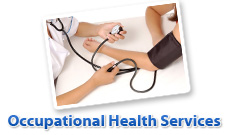Stimulated by a requirement to assure well-being, safety and health of employees and visitors, workplace drugs policies have come to be noticeably familiar around the British Isles. But nevertheless, there still persist numerous myths surrounding the strategy, that can result in concern amongst the members of staff being tested.
Random Drug and Alcohol Screening – Precisely where is the danger?
Some people get the idea that the influence of drugs of abuse in the workplace is a trivial issue. Pretty much everybody has been exposed to Christmas time anti-drink-driving television advertisements and as a result, bear in mind that drug driving and drink-driving is hazardous, so can’t we depend upon the public’s judgement? Unfortunately, in the region of one-half of all workplace and road fatalities across Britain relate to drinking, drug misuse, or both. Recent available data prove that roughly two thirds of illegal drug users are in full-time employment, which means that the average illegal drug misuser is, in a sense, the typical employee. The latest Home Office statistics put the amount of 16 to 29-year-olds that have used drugs in the most recent 12 months at a staggering 50% of the population. In light of this fact, this shouldn’t be viewed as somebody else’s problem, as it impacts each and every single place of work. Although the consumption of illegal substances may not by default suggest risk-taking and irresponsible attitudes within the work environment, it does dramatically heighten the probability of accidents and near misses, absenteeism and attendance issues, a reduction in productivity, damage to equipment and stock, compensation claims and a much higher turnover of employees.
Random Drug and Alcohol Screening – So what do you suggest? Isn’t employee drug testing difficult to do?
Plenty of businesses only perform diagnostic tests in the event of an accident, a near miss or incident, or when they have reasonable grounds for concern that an employee is potentially unsafe for active duty. Given the substantial assortment of potential hazards within industrial work environments, lots of managers believe it completely acceptable to conduct workplace drug and alcohol screening on such occurrences, in order to avoid them occurring ever again.
In contrast, random employee drug screening brings testing to the next degree, whereby a fraction of the employees is randomly selected to volunteer an urine and breath sample. It may seem a little heavy-handed, though it is actually pretty typical for as little as 5% of the staff to be screened up to once every 12 month period. This means that only one in 20 individuals being tested, or perhaps, as an employee, your odds of being actually screened might be just once each 20 years. Incredibly, such marginal testing has been demonstrated to decrease positivity rates from as high as forty six percent down to as low as just 2% in as little as only a couple of months. This strongly suggests that the run of the mill substance misuser present in the work environment is not addicted, but is purely making choices about their lifestyle which could be steered toward a better outcome.
Random Drug and Alcohol Screening. Might this be regarded as an infringement of an individuals’ human rights?
While some employees may be hesitant at first regarding the thought of workplace testing, many comprehend that this is being performed in order to guarantee the safety of anybody in the workplace. So long as the level of on-site drug testing is comparable to the possible dangers found in the workplace and does not deliberately impact upon employee leisure time, it does not represent a danger to staff human rights. Across the United States of America, around ninety eight percent of the biggest 1000 organisations drug and alcohol screen their workers without any issues.
Where is the harm while recreationally using illegal drugs outside of the workplace?
Several illegal substances have created a less dangerous image by virtue of their glamorised portrayal throughout the nation’s radio, television and newspapers. Without a doubt, expressions such as “recreational cocaine use” can cause a significant deal of harm in misinforming people. For a large amount of individuals, cocaine is actually more habit-forming than heroin and, as a result can’t be taken on a recreational basis without significant risk of addiction. Dependence aside, the purity of cocaine has reduced from approximately forty five percent purity in 2004 down to a mere 25% purity as of 2010 (with purity at an all-time low of 9 percent being reported). Even more worryingly, the chemicals used to add mass to the cocaine can be anything from dangerous anaesthetics, cancer-causing pharmaceuticals, pet worming agents, all the way through to to insecticides. The unfortunate fact is that you can never ever trust a drug dealer.
Even substances previously deemed to be soft drugs still carry risks. At the present time in the UK, 92% of individuals admitted for treatment for mental illness are heavy users of cannabis. bearing this in mind, workplace drugs screening seriously possesses the potential to take on wider antisocial and health related concerns as it eventually is more commonplace.
To read more on on-site drug screening and home drug test kits, see www.drug-aware.com
Information about the author: Christopher Evans is the Technical Director of Drug-Aware Ltd, a supplier of Random Drug and Alcohol Screening, drugs and alcohol screening devices, lab services as well as alcohol and drugs awareness training. He has personally trained literally thousands of delegates across hundreds of companies, the HM Prison Service, the British police and hospitals and mental health units throughout the United Kingdom.







